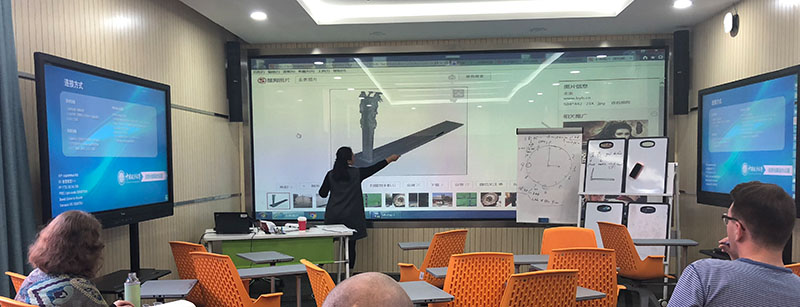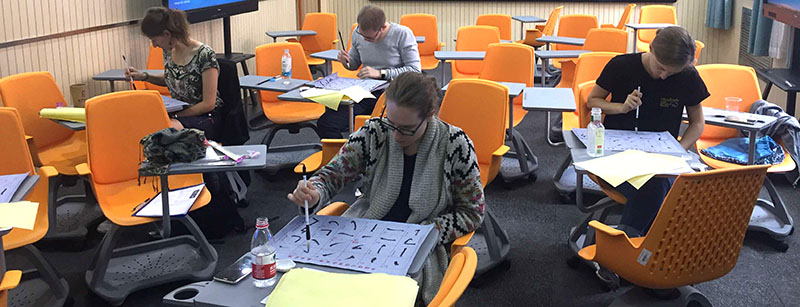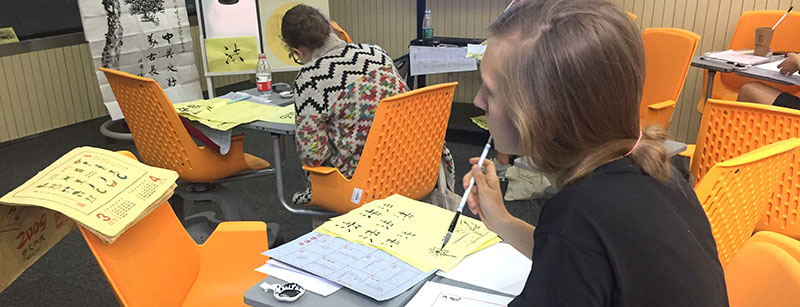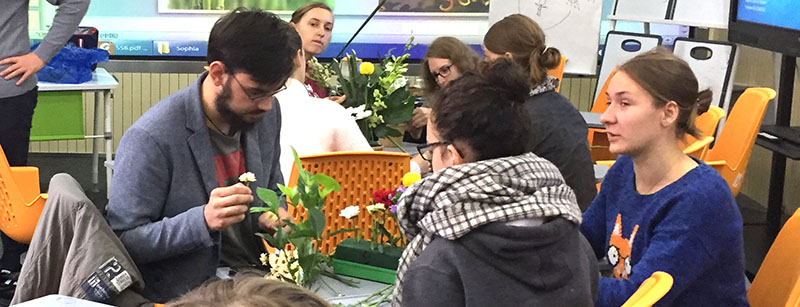Since this Academic Year, the International Education School offers an Elementary Chinese class, an Elementary Oral Chinese class and an Traditional Chinese Culture class to the international students. The China-EU School of Law’s international students were invited to join the classes. 17 European students from the Chinese Law Taught in English programme take part in these classes. They learn to write simple Chinese characters, practice basic Chinese in order to understand some Chinese for daily life and experience the rich traditional Chinese culture. The Traditional Chinese Culture class is divided into eight topics: playing the lute, chess, calligraphy, painting, poems, wine, flowers and tea. “The students actively participate and show strong interest,” teacher Ma Linlin says.

Two students from Poland, Kacper Olejarski and Ania Drwal, told that after two months of learning Chinese and about the traditional Chinese culture, they have learned enough Pinyinto spell some simple Chinese characters, and they also learned to write some simple Chinese characters such as Dong (east), Xi (west), Nan (south) and Bei (north). They can also understand basic Chinese for daily communication such as the question “What date is today?”.

The Polish students were very keen on the Traditional Chinese Culture class. Kacper told that he loved the chess and tea sessions the most. In the tea session, the teacher let the students play chess with different rules in two groups while in the tea session, they could taste chrysanthemum tea, Pu’er tea and green tea. “Each kind of tea has its own special flavor and I loved them all,” Kacper says. “Although we often drink tea in Poland as well, the tea culture in China is much more special”. Ania liked calligraphy best. The teacher showed the students how to use an ink brush and ink on Xuan paper. Students learned the most basic strokes. Teacher Ma Linlin taught them how to write “law” in Chinese and every international student can write this sign as well. ”I also learned how to write my Chinese name with an ink brush,” Ania says.

In the Elementary Oral Chinese teacher Ma Linlin is quite serious and careful in teaching. Every time the teacher introduced new words and sentences to the students, the teacher also told them how the words relate to traditional Chinese culture. For instance, in talking about each month, teacher Ma Linlin introduced the 24 solar terms in Chinese tradition, the 24 points that in traditional East Asian lunisolar calendars match a particular astronomical event or signify an natural phenomenon, to the international students. By learning simple Chinese vocabularies, students thus can also appreciate the rich cultural heritage of China.

